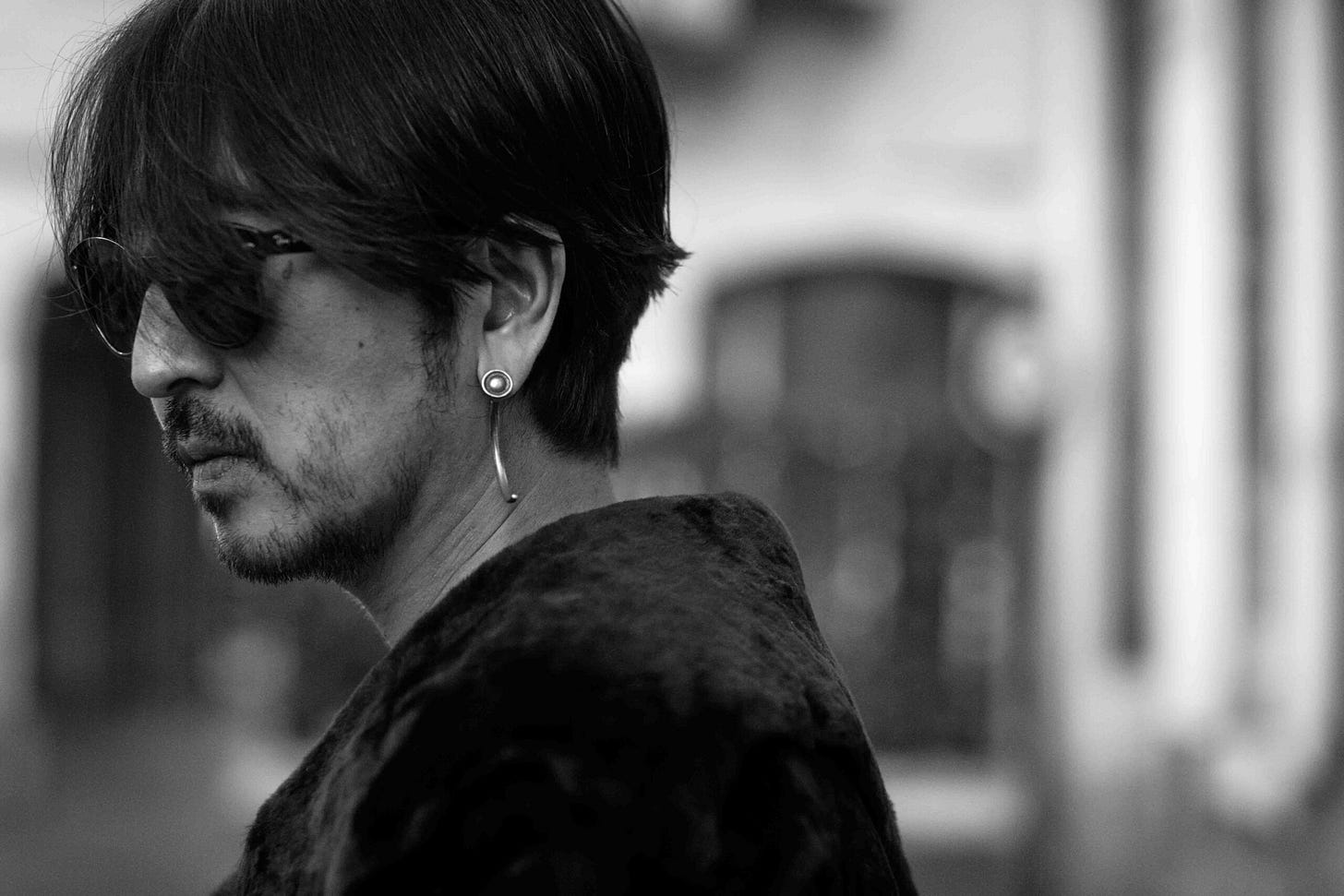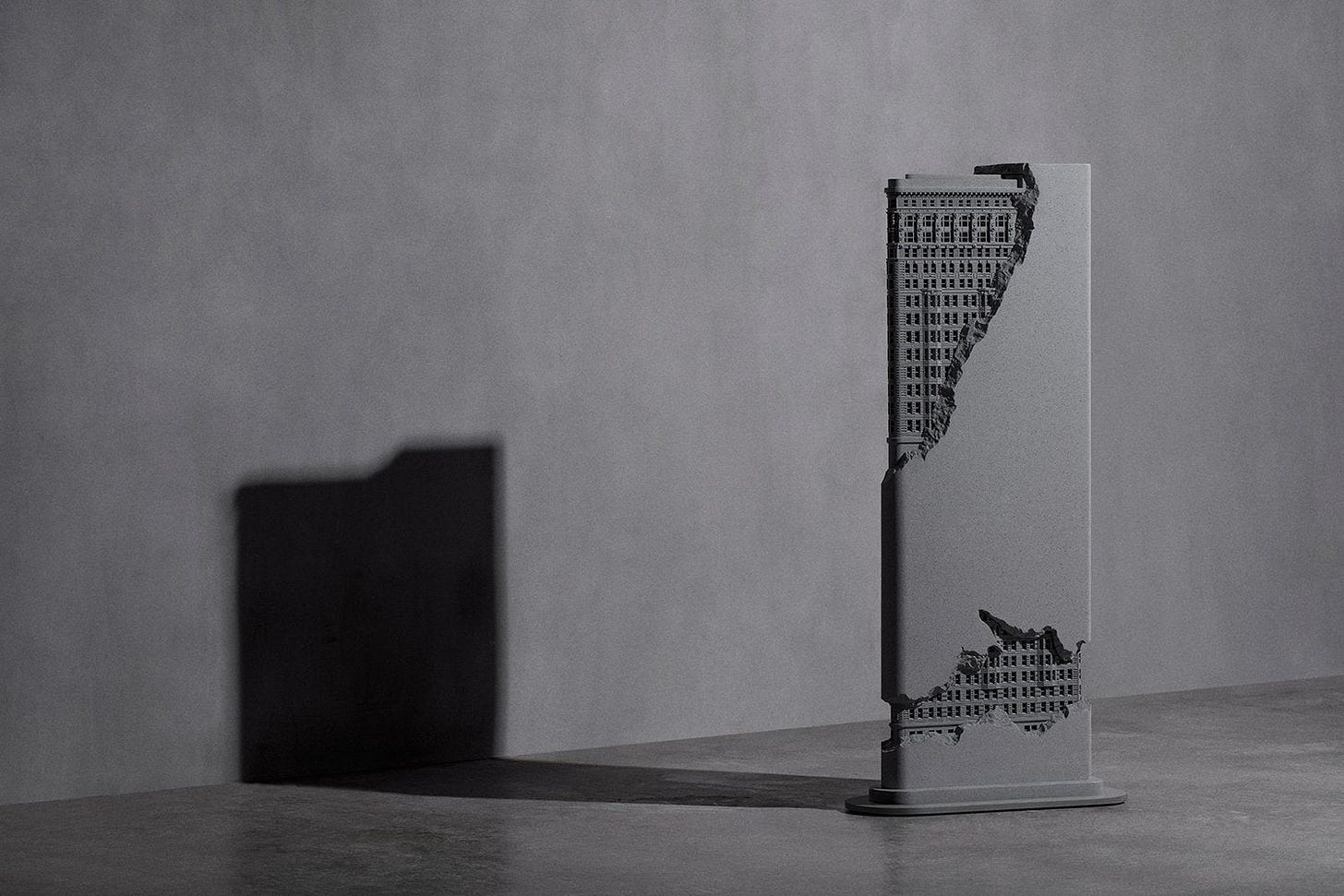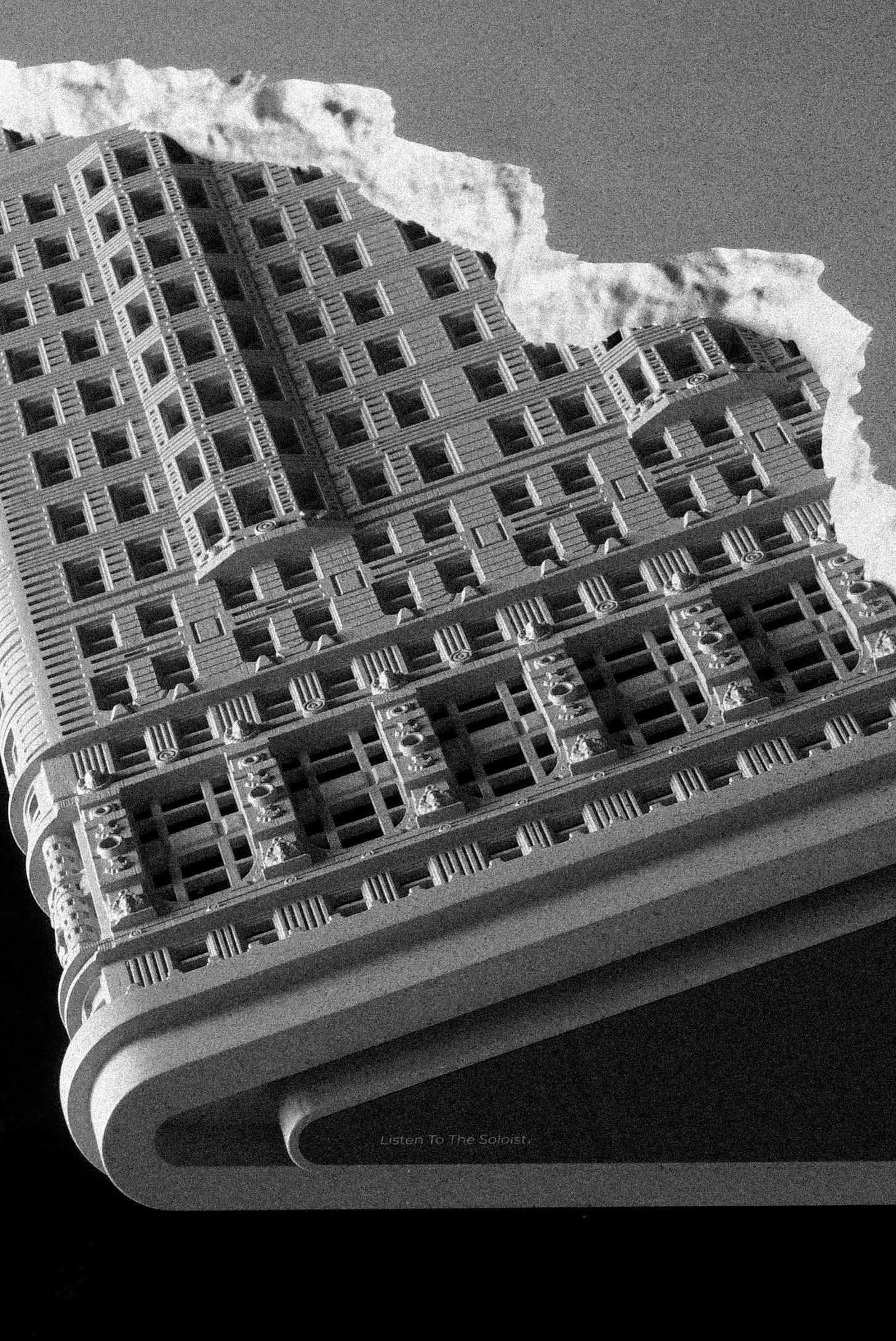A Brutalist Symphony by Takahiro Miyashita
Where architecture meets sound—through the quiet mind of a rebel designer.
The Genesis: Tokyo to New York
Born to Rebel
Takahiro Miyashita (b. 1973, Tokyo) grew up in a home divided by music. His mother, a painter, banned punk records. His father, a classical composer, filled the house with piano. But defiance won. Punk icons like the Sex Pistols and Japanese legend Kiyoshiro Imawano became lifelong muses:
"Imawano and John Lennon are my two idols. Their defiance taught me art must disrupt."
At 19, BEAMS founder Etsuzo Shitara spotted Miyashita’s raw talent and sent him to New York. There, he wandered:
-
Sketched Bowery fire escapes, calling their form “musical rhythm”
-
Studied the Flatiron Building’s triangular audacity—“frozen music” in his words
-
Absorbed the raw chaos of CBGB: “NYC’s energy felt like electricity under my skin.”
"I've Never Learned Fashion" — The Unconventional Classroom
In 1992, BEAMS founder Etsuzo Shitara sponsored Miyashita’s first study trip to New York City. Far from a formal education, it was a period of raw immersion. Miyashita wandered the city sketching architecture, absorbing the rebellious pulse of the punk scene, and observing how form, chaos, and culture collided in everyday spaces.
That early exposure shaped his instincts. Guided later by Keizo Shimizu of Nepenthes, Miyashita internalized an experimental, emotionally charged approach to design—one that would eventually fuel the launch of NUMBER (N)INE at age 23.
“Fashion isn’t clothing—it’s the body’s architecture.”
This belief—formed through experience rather than textbook—still anchors his work today.
The Architect of Sound
From New York Brutalism to Audio Sculpture
Miyashita’s obsession with architectural form—especially New York’s Flatiron Building—lives in his fashion and now, in TheSoloist. Sounds. speaker. This 110cm sculptural object mimics fractured concrete, revealing the Flatiron’s outline like a relic unearthed.
The result is striking: a raw, brutalist form that captures his belief in deconstruction as both aesthetic and ideology.
Acoustic Alchemy: Inside the Design
Triangular shapes are notoriously difficult for both buildings and speakers. Reflections, phase interference, and vibration control all become more complex. But Miyashita’s engineering team confirmed: they embraced the challenge—not as an obstacle, but as part of the design philosophy.
TheSoloist. Sounds. contains 7 speaker units, including two 6.5-inch woofers and silk-dome tweeters. With a 2000W output and a 20Hz–25KHz frequency range, it delivers a tactile listening experience—sound you don’t just hear, but feel on your skin.
“Just as the Flatiron balanced innovation and stability in 1902, this speaker balances Miyashita’s trifecta: fashion’s tactile artistry, music’s emotional resonance, and architecture’s bold form.”
Miyashita’s Sonic Universe
Personal Soundtrack
Miyashita designs in silence or to the meditative cadences of Glenn Gould. But his roots lie in rebellion—John Lennon, Kurt Cobain, and Kiyoshiro Imawano shaped his worldview. Music is embedded in his garments: hoodies embroidered with Johnny Cash lyrics, runway soundtracks scored with Nine Inch Nails and Nirvana.
In tribute, fans of his earlier brand Number (N)ine curated this playlist inspired by his sonic world:
🎧 Listen: The Number (N)ine-Inspired Playlist
Played through TheSoloist. Sounds. speaker, the experience becomes physical—an emotional installation piece in your living space.
Release & Availability
-
Debuted: December 2023, during one of Takahiro’s runway shows
-
Now Available: Exclusively at BOLTBOLT (GALLERY)
-
Retail Price: $6,200
-
Shipping Weight: 25kg (55 lbs)
Key Specs:
-
Power Output: 2000W
-
Frequency Range: 20Hz – 25kHz
-
Drivers: 7 units, including two 6.5" woofers and silk-dome tweeters
-
Material: Polycarbonate resin
-
Height: 110cm (3.6 ft)
-
Connectivity: Bluetooth, AUX
A limited-edition sonic sculpture—designed to be heard, seen, and felt.
Final Note
“TheSoloist. Sounds. is not a speaker—it’s a monument to dissonant beauty.”
Like Miyashita’s trench coats or grunge-laced hoodies, it doesn’t aim to please the many. It seeks the one listener who truly understands.
“The beginning is the end, and the end is the beginning.” — Takahiro Miyashita




